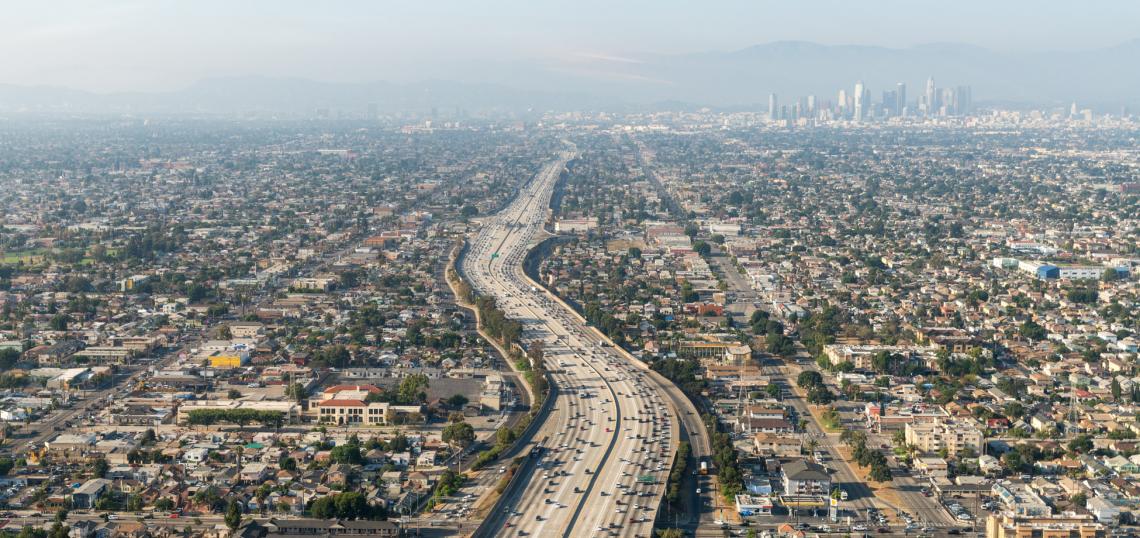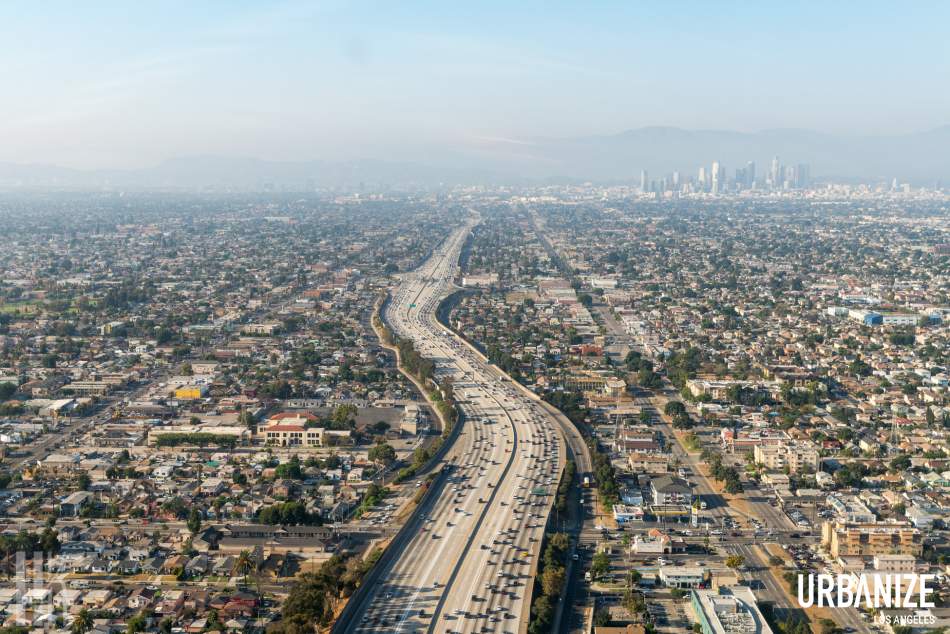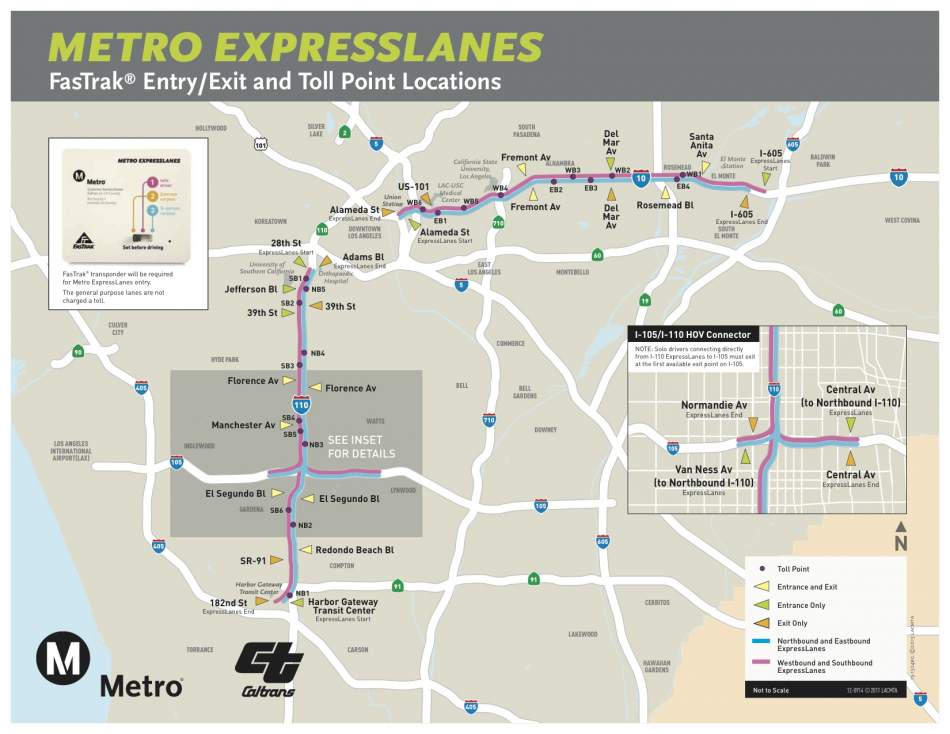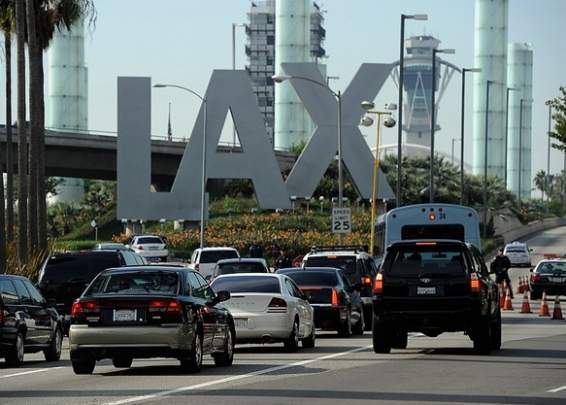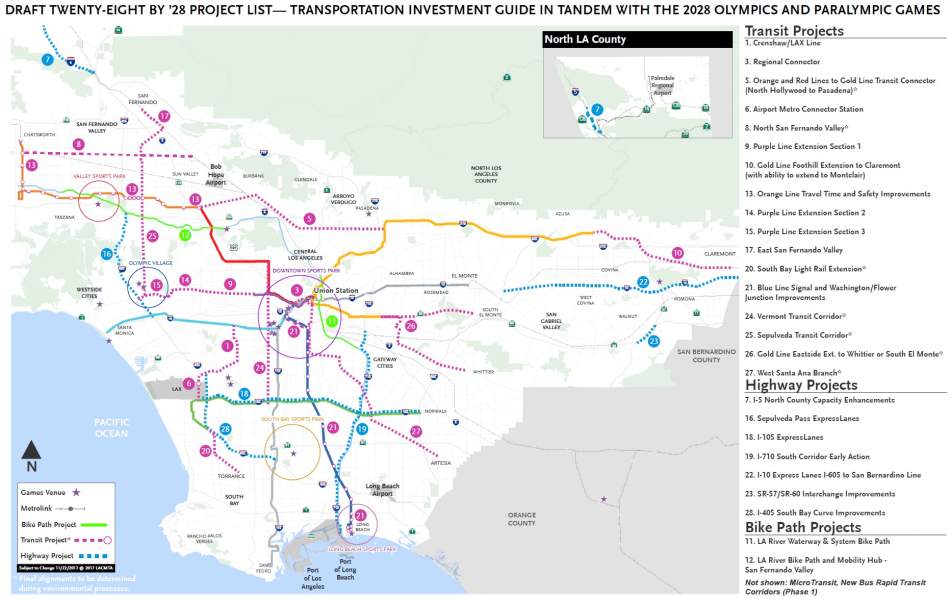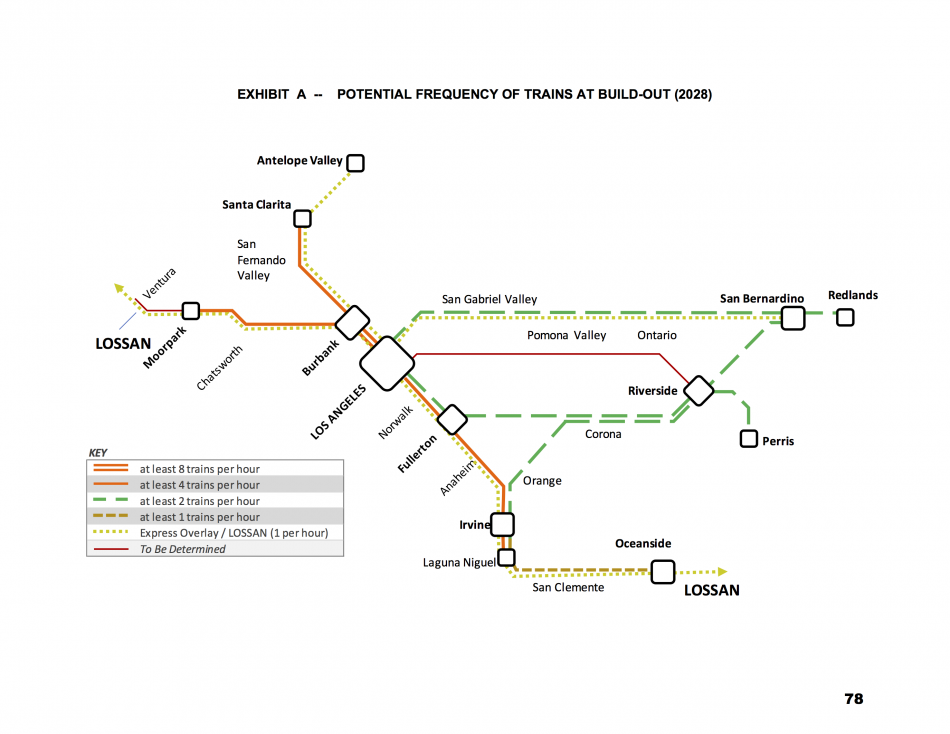At a packed meeting Thursday, Metro's Board of Directors authorized the study of new strategies to ease Los Angeles' notorious traffic - including congestion pricing and fees on rideshare services such as Uber and Lyft.
Congestion pricing, which regulates traffic congestion in high-demand areas by charging drivers a fee, can take a variety of forms. Metro staff has put forth three potential ways that it could be implemented in Los Angeles County, including:
- VMT pricing, where a fee is charged per mile driven by a vehicle;
- Cordon pricing, in which a fee is charged for entering a certain area; and
- Corridor pricing, where fees are charged for access to heavily-trafficked roads or highways.
Metro staff have estimated that congestion pricing could generate anywhere between $9.6 billion and $83 billion over a period of 10 years, money that could be put toward improved transit service - and potentially, capital projects.
A modest form of congestion pricing is already available in Los Angeles County in the form of the ExpressLanes which run within the I-10 and I-110 Freeways. Drivers are charged a per-mile toll to access the lanes, with the revenue returned to the corridor in the form of increased frequencies on the Silver Line rapid bus line between El Monte and Harbor Gateway via Downtown.
The Metro Board proved more receptive toward the idea of studying congestion pricing than some had previously anticipated, though some - including County Supervisor Janice Hahn - expressed lingering doubts about the project. Multiple Board Members noted that County residents had already voted twice since 2008 to raise their own taxes in order to fund transportation projects - after campaigns which billed the measures as "traffic relief" - and were reluctant to make yet another ask of the electorate.
Los Angeles Mayor Eric Garcetti noted that congestion pricing has been successful in cities such as London, but cautioned that some governments have become "addicted to the money [while forgetting] about the congestion relief."
Nonetheless, congestion pricing also had staunch advocates amongst Board Members, most notably Los Angeles City Councilmember Paul Krekorian.
"A hugely disproportionate number o the people who use our system are transit-dependent, and they are disproportionately impacted by congestion slowing down buses," said Krekorian during the meeting. "We build really expensive streets that people use for free, and that is nothing but a subsidy to the automobile industry and people who use cars."
Imposing taxes on trips on transportation network companies - including Uber and Lyft - also raised questions among board members.
Inglewood Mayor James T. Butts expressed concern that giving Metro authority to assess taxes on rideshare companies could have implications for the ability of individual cities within Los Angeles County to regulate the industry and impose fees of their own.
Krekorian, in contrast, welcomed new fees on the transportation network companies, arguing that they increase congestion while siphoning riders away from transit systems.
Duarte Mayor John Fasana agreed with that assessment, but suggested a variable fee for the different products offered by the ridesharing companies. Private riders could be taxed at one rate, while truly shared rides, such as those in an Uber Pool, could be charged less - or even not at all.
A fee structure has not been fleshed out at this point in time, though Metro has previously estimated that a 20-cent fee per trip could yield $401 million over ten years, and a higher $2.75 fee could raise $5.5 billion over the same time period.
The study of congestion pricing and new fees on rideshare companies falls under a larger campaign branded as "The Re-Imagining of LA County: Mobility, Equity and the Environment," which also includes an ambitious proposal to accelerate completion of eight transportation projects prior to the 2028 Summer Olympic Games. In that effort, a motion introduced by Garcetti, Butts, Hahn and Supervisor Hilda Solis calls for prioritizing four "pillar projects" for acceleration:
- the Green Line extension from Redondo Beach from Torrance;
- an extension of the Gold Line's Eastside branch;
- the proposed rail line through the Sepulveda Pass; and
- the West Santa Ana Branch light rail line.
The West Santa Aana Branch was additionally designated as having "first priority," for any public-private partnership that Metro could engage in to accelerate its construction.
Mayor Garcetti urged that the acceleration project - called Twenty-Eight by '28 - should be considering as a distinct effort from the study of congestion pricing and fees on rideshare companies, stating that the first priority for any new money raised through those fees - if implemented - should go first toward operations, with only surplus funds going toward capital projects such as the project acceleration.
The total budget of the projects due for acceleration is $26 billion, per the Measure M expenditure plan approved in 2016. It is currently unclear costs acceleration will add, though the board is set to report back on a financing plan later this year - concurrently with a report on congestion pricing and fees on rideshare services.
Besides tackling project acceleration and potential sources of new revenue, the Metro Board also approved a construction contract with Tutor-Perini for the construction of the third and final phase of the Purple Line extension, which will run 2.6 miles between Century City and the Veterans Administration Campus in Westwood. The project is expected to open in 2026 and attract more than 50,000 weekday boardings.
The Board also approved a motion by Barger, Krekorian, and Glendale City Councilmember Ara Najarian seeking clarification on how the scaled back California High-Speed Rail project will affect rail service between Palmdale and Anaheim - the corridor which the train is expected to travel through in the Los Angeles and Orange County areas. The motion requests a report on what opportunities are available to make improvements to the regional rail system regardless of high-speed rail, making note of Metrolink's ambitious SCORE program, which calls for partial electrification of the 534-mile network.




